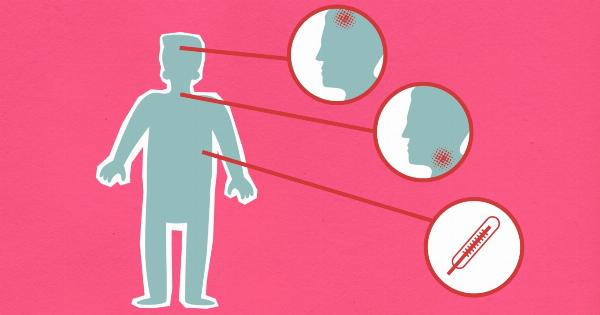Glaucoma is a group of eye diseases that damage the optic nerve, leading to vision loss and potential blindness. While there are several risk factors associated with glaucoma, one crucial factor that often gets overlooked is heredity.
Understanding the role of genetics in glaucoma can help identify individuals at higher risk and enable early intervention. In this article, we will delve into the connection between heredity and glaucoma and explore what you need to know about this complex eye condition.
What is Glaucoma?
Glaucoma is a progressive eye disease characterized by damage to the optic nerve, which transmits visual information from the eye to the brain.
The most common type of glaucoma, open-angle glaucoma, occurs when the drainage canals in the eye gradually become clogged, resulting in increased intraocular pressure. This increased pressure can damage the optic nerve over time, causing vision loss.
While high intraocular pressure is a significant risk factor for glaucoma, it is not the only cause. Other factors, such as genetics and family history, play a crucial role in the development of this condition.
Heredity and Glaucoma
Research suggests that genetics play a significant role in glaucoma development. People with a family history of glaucoma are more likely to develop the disease themselves compared to those without a genetic predisposition.
Several genes have been identified as potential contributors to glaucoma, including MYOC, OPTN, and CYP1B1. However, it is important to note that having these genes does not guarantee the development of glaucoma.
Additionally, certain ethnic backgrounds have a higher prevalence of glaucoma, further highlighting the role of heredity.
For example, individuals of African, Asian, and Hispanic descent are more prone to developing certain types of glaucoma compared to individuals of European descent.
Understanding the Genetic Factors
Researchers continue to explore the specific genetic factors that contribute to glaucoma development. By identifying these genes, scientists hope to gain insights into the underlying mechanisms of the disease and develop more effective treatments.
Currently, three primary genetic factors are being studied:.
1. MYOC Gene Mutations
Mutations in the MYOC gene are associated with a form of glaucoma known as primary open-angle glaucoma (POAG). The MYOC gene provides instructions for producing a protein called myocilin, which plays a role in regulating intraocular pressure.
Mutations in this gene can lead to abnormal production or accumulation of myocilin, causing elevated intraocular pressure and damage to the optic nerve.
2. OPTN Gene Mutations
Mutations in the OPTN gene are linked to normal-tension glaucoma (NTG). NTG is a type of glaucoma in which the optic nerve is damaged despite normal intraocular pressure.
The exact function of the OPTN gene is not fully understood, but researchers speculate that it may be involved in cellular processes related to optic nerve health and survival. Mutations in the OPTN gene may disrupt these processes, leading to optic nerve damage and NTG.
3. CYP1B1 Gene Mutations
Gene mutations in CYP1B1 are associated with primary congenital glaucoma (PCG), a type of glaucoma that manifests in early childhood.
The CYP1B1 gene provides instructions for producing an enzyme involved in the development of various tissues, including the eye. Mutations in this gene are thought to disrupt normal eye development, leading to abnormalities in the drainage system and elevated intraocular pressure.
Assessing Genetic Risk
While genetic testing for glaucoma is not yet a routine clinical practice, understanding your family’s medical history can provide valuable insights into your genetic risk.
If you have a close family member, such as a parent or sibling, who has been diagnosed with glaucoma, it is crucial to inform your eye care professional. They can evaluate your eye health more closely and recommend appropriate screenings and preventive measures. Regular eye exams become even more important when genetic factors are involved.
Other Risk Factors
While heredity plays a significant role in glaucoma, it is not the only contributing factor. Various other risk factors can increase the likelihood of developing glaucoma, including:.
1. Age
As we age, the risk of developing glaucoma increases. Individuals over the age of 60 are at higher risk for glaucoma than younger individuals.
2. High Intraocular Pressure
Elevated intraocular pressure is one of the primary risk factors for glaucoma. Regular eye exams that measure intraocular pressure can help identify individuals at risk.
3. Thin Cornea
A thin cornea has been associated with an increased risk of developing glaucoma. Corneal thickness can be measured during a comprehensive eye examination.
4. Medical Conditions
Medical conditions such as diabetes, high blood pressure, and heart disease have been linked to an increased risk of glaucoma. Managing these conditions is essential for overall eye health.
5. Eye Trauma
Experiencing a significant eye injury or trauma can increase the risk of glaucoma later in life. Prompt medical attention is crucial in such cases to prevent long-term complications.
Early Detection and Treatment
Early detection is key to preventing vision loss from glaucoma. While there is no cure for glaucoma, various treatment options can help manage the condition and slow down its progression:.
1. Eye Drops
Medicated eye drops are often prescribed to lower intraocular pressure and prevent further damage to the optic nerve. It is important to follow the prescribed regimen and use the drops as directed.
2. Oral Medications
In some cases, oral medications may be prescribed alongside eye drops to further reduce intraocular pressure. These medications may have certain side effects, so regular monitoring is necessary.
3. Laser Therapy
Laser therapy, such as selective laser trabeculoplasty (SLT) or laser peripheral iridotomy (LPI), can help improve the drainage of fluid from the eye, reducing intraocular pressure.
4. Surgical Procedures
In advanced cases or when other treatments fail to adequately control intraocular pressure, surgical interventions may be necessary. These procedures aim to create alternative drainage pathways or decrease fluid production in the eye.
Lifestyle Management
In addition to medical treatments, certain lifestyle modifications can help manage glaucoma and reduce the risk of progression:.
1. Regular Exercise
Maintaining an active lifestyle can help improve blood flow to the optic nerve and reduce intraocular pressure. Consult with your doctor before starting any exercise regimen.
2. Balanced Diet
A diet rich in fruits, vegetables, and whole grains is beneficial for overall eye health. Some studies suggest that green leafy vegetables, in particular, may have a protective effect against glaucoma.
3. Proper Eye Protection
When engaging in activities that could potentially cause eye trauma, such as sports or home improvement projects, always wear appropriate eye protection. Protective eyewear can significantly reduce the risk of eye injury.
Conclusion
While glaucoma is a complex eye condition influenced by various factors, understanding the role of heredity is crucial.
A family history of glaucoma may increase your risk, and regular eye exams become essential for early detection and appropriate management. By staying informed about the genetic factors and other risk factors associated with glaucoma, you can take proactive steps to preserve your vision and prevent irreversible damage.




























